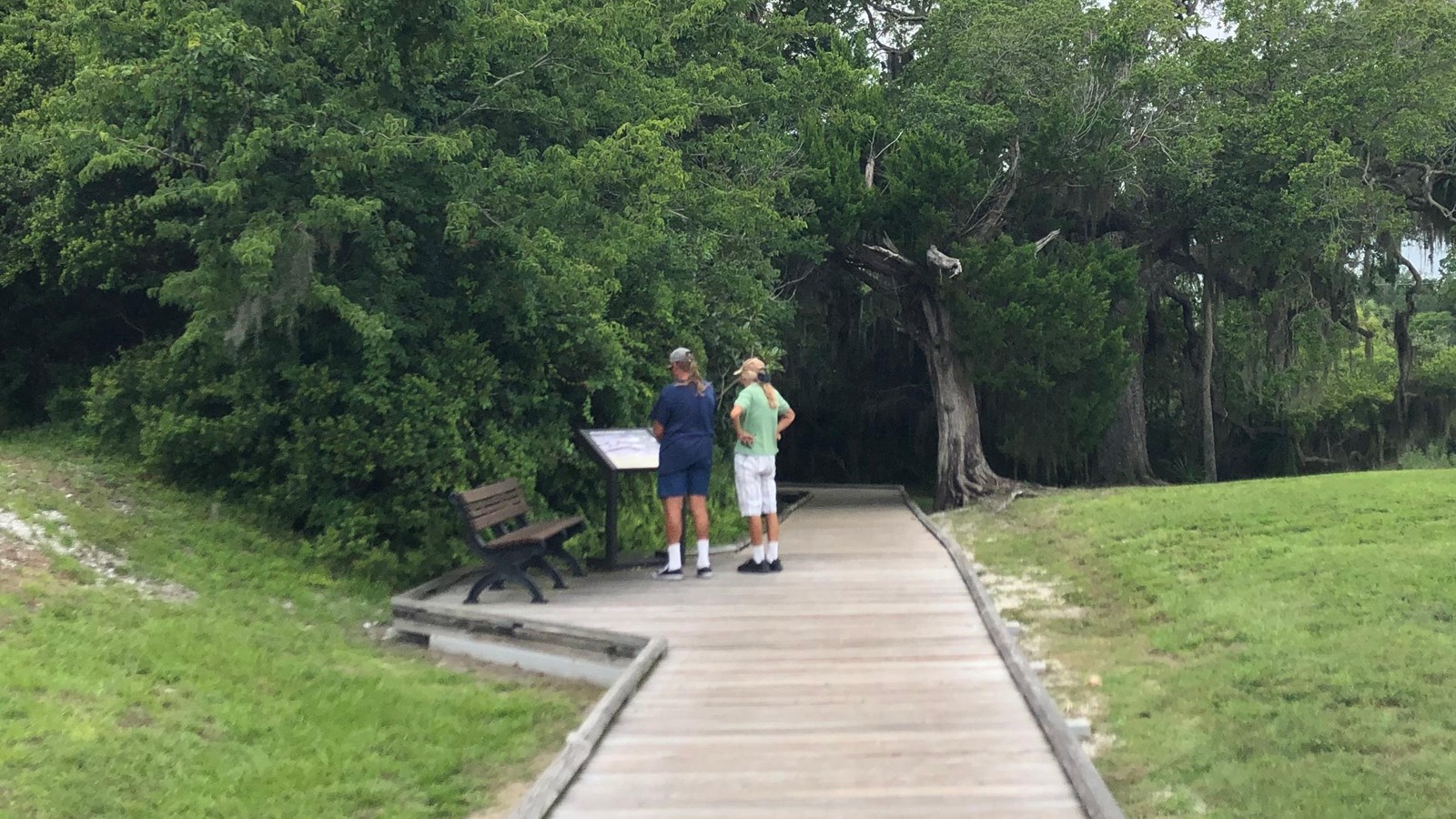Last updated: August 29, 2025
Place
Seminole Rest Wayside, Mounds of Evidence

NPS/Photo
Several mounds exist here at Seminole Rest. Snyder's mound, the largest mound, is not one mass of shells but in some areas seventeen different layers deposited over time. In an effort to find clues to the Timucuans, archeologists are interpreting the layers.
Clam shells make up most of the mound layers even though other materials, including oysters, conchs, and whelk shells and the remains of sea trout, shark, and bass were discovered. The abundance of clam shells indicates the site was mostly used for harvesting clams.
There are layers that suggest there were periods when the mound was not used but instead was overgrown with vegetation. Remains of poke berry, hackberry, and skullcap in the layers show vegetation has changed very little over the centuries. Many of these plants may have been used by the Timucua for food, fuel, and medicine.
Clam shells make up most of the mound layers even though other materials, including oysters, conchs, and whelk shells and the remains of sea trout, shark, and bass were discovered. The abundance of clam shells indicates the site was mostly used for harvesting clams.
There are layers that suggest there were periods when the mound was not used but instead was overgrown with vegetation. Remains of poke berry, hackberry, and skullcap in the layers show vegetation has changed very little over the centuries. Many of these plants may have been used by the Timucua for food, fuel, and medicine.
